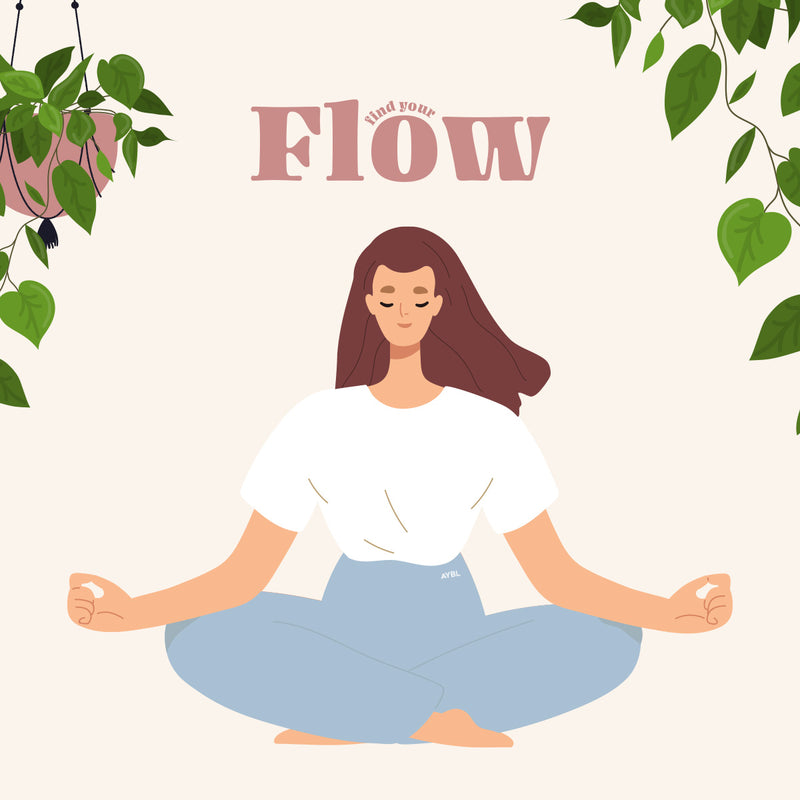
A Beginner’s Guide To Meditation & Mindfulness
Meditation and mindfulness is no longer a practice reserved solely for those seeking spiritual enlightenment. Now, research shows as many as 500 million people worldwide practice meditation, which is triple the amount in 2012.
However, despite an increasing popularity, there is still some confusion around what exactly meditation is. Well, ladies, that’s where we come in. Designed with effortless ease of movement, our Flow Collection is the perfect style to elevate your studio workouts or add an element of calm and flexibility to your cool-downs.
Meditation can significantly benefit your mental and physical health and the best part is, you need less than 10 minutes alone each day to do it. Follow our beginner’s guide to get the lowdown on everything from how to meditate to the benefits of meditation.

WHAT IS MEDITATION?
Meditation is not about learning to empty your mind or stop your thoughts, instead, it is the practice of training your focus from a place of non-judgement. Meanwhile, mindfulness is all about paying attention to what you’re feeling and observing in the present moment.
Mindfulness meditation is the most popular form of meditation and, arguably, the easiest one to start with. This practice is about learning how to pay close attention to the breath and recognise when the mind begins to wander. When we pay attention to our breath, we are training our mind how to return to and remain in the present moment.
Mindfulness may seem simple, but it’s like training your body, it takes practice and it requires patience.

HOW TO MEDITATE
Mindfulness meditation can be done just about anywhere, as long as you can relax and focus. Here are some top tips on how to make the most of your practice:
1. Find a quiet space. Take a seat somewhere quiet and where you won’t be disturbed. Put any distractions, such as your phone, out of sight.
3. Breathe gently. Bring your attention to your breath, noticing as you inhale and exhale.
4. Permit your mind to wander. Inevitably, your mind will begin to wander. When this happens, acknowledge the thought has distracted you, but don’t dwell on it or judge yourself. When you’re ready, return your focus to your breath.
5. End with kindness. When you feel ready and your mind feels centred, gently lift your gaze or open your eyes. Take a moment to notice any sounds, notice how your body feels and notice your thoughts. Remember to treat yourself with kindness.
Practising meditation for 5 to 10 minutes every day is an achievement to be proud of and will allow you to notice the benefits.

HOW OFTEN SHOULD I MEDITATE?
We recommend practising meditation at the same time every day, as this will help you to make a habit of it and build it into your daily schedule. However, like anything, it’s important to go at your own pace and work in a way that suits you. So, if for some reason you need to skip a day, that’s perfectly okay!

BENEFITS OF MEDITATION
Meditation and mindfulness is a great way to add balance and calm into your everyday. Here are some other ways meditation can benefit you:

The easiest way to practise meditation is to start small. Allocate a few minutes of your day, every day and find a comfortable space without distractions. You may find it helps to use a meditation app, such as Calm or Headspace.
The most important thing to take away from our beginner’s guide to meditation is this, girls. Patience and kindness are absolutely key.
If you’re looking for more reasons to meditate, our all new Flow Collection is available to shop now. Designed with your comfort in mind, our range of yoga-inspired activewear promises endless flexibility to help you Find Your Flow.